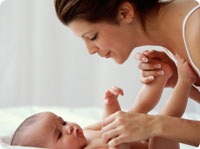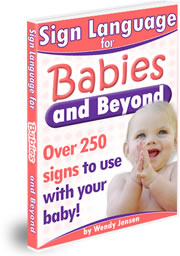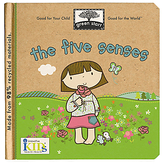 To develop trust and empathy from the beginning with your baby, tune in to what your baby is communicating. Babies need empathetic support to help them learn to regulate their emotions. Respond sensitively and supportively to a child expressing emotion. To develop trust and empathy from the beginning with your baby, tune in to what your baby is communicating. Babies need empathetic support to help them learn to regulate their emotions. Respond sensitively and supportively to a child expressing emotion.
Eye Contact
Newborn babies see best about a foot away from their bodies, what we call breastfeeding distance. They will look at a human face for hours, particularly the eyes. We all know what our eyes can convey without words. The same is true for bonding with your baby. You can also use facial expressions as a means of bonding with your baby. Touch
Your skin is the largest organ on your body. In the beginning body contact is an important source of heat. Your baby will warm fastest skin to skin with anyone, with something covering them. This can start at birth. After birth the daily care of a newborn often involves touch. Use these opportunities to extend this feeling to your baby. Think about trying infant massage classes. Sounds
Did you know that your baby would rather hear your voice than the "music" in many of the toys available. Often times we think our voices aren't good enough to sing lullabies, but your baby only hears your love and affection.
Our Adverts: Replica watches.
|
Benefits Of Swaddling Your Baby |
by Amber Greviskes
 There are many benefits to swaddling your baby, but incorrect swaddling can lead to serious health problems like hip dysplasia. Follow our tips to avoid these risks and get the most out of swaddling your baby. There are many benefits to swaddling your baby, but incorrect swaddling can lead to serious health problems like hip dysplasia. Follow our tips to avoid these risks and get the most out of swaddling your baby.
After years of encouraging parents to use swaddling as a way to calm infants, pediatricians are cautioning them against using incorrect methods that may do more harm than good.
In September 2011, the American Academy of Pediatrics published a study showing that hip dysplasia, a condition that affects thousands of children and adults each year that is caused by misalignment of the hipbones, can be traced to improper swaddling techniques. The condition, also known as developmental dysplasia of the hip, hip dislocation, congenital dislocation of the hip, or loose hips, prevents the hip joint from functioning properly and wears on the joint faster than normal. Unlike a dislocated shoulder, which can be easy to spot because of the pain associated with it, those with hip dysplasia don't experience discomfort until the later stages, when the condition is harder to correct.
|
 Often I'm asked "What is the optimal age to introduce signs to our baby?". I tell families I started signing with Joshua and Sabrina when they were 6 months...but now, knowing what I know, I would start much earlier...from birth. Often I'm asked "What is the optimal age to introduce signs to our baby?". I tell families I started signing with Joshua and Sabrina when they were 6 months...but now, knowing what I know, I would start much earlier...from birth.
Babies have the motor skills to sign back between 8 and 11 months, typically when first waves for "BYE-BYE" and the "PICK ME UP" gesture starts. So this is when productions or expression of signs can typically appear. But understanding or the ability to receive signs can occur much earlier.
Babies younger than 8 months may get excited about seeing the sign for "BATH" or "MILK". Often at trade shows and presentations, mom ask me not to sign "MILK" in my examples because their young babies understand the sign!
Joanne, WeeHands Instructor in Whitby, tells a story about her son, Richard, who disliked being laid down...but when Joanne would lay him down and sign "DIAPER CHANGE" he was okay with being laid down. Maybe he was understanding, "Ok, this lay down means "DIAPER CHANGE" not sleep time!"
I did get an email a few years ago from one mom I taught. Her daughter at 5 months was signing an approximation (B-shape hands, not S-shape or X-shape hands) of the sign for "CHANGE", after her diaper was dirty!
|
 I didn’t fully comprehend the need - or the satisfaction that came with it - to bond with my child until he was born and I held him for the very first time. But although the bonding began that day in the delivery room, it didn't end there. I didn’t fully comprehend the need - or the satisfaction that came with it - to bond with my child until he was born and I held him for the very first time. But although the bonding began that day in the delivery room, it didn't end there.
The parent-baby bonding process takes time. But that process will probably be one of the most rewarding times your life. The moments when your baby stops crying when he sees you walk around the corner, smiles at you for the first time, and falls asleep contentedly on your shoulder are priceless. They are all indications that your baby feels safe and loved in your presence.
They are all signs that you have bonded.
In those precious first weeks of life, your baby responds to you using all five of her senses. Here are some ways to engage her in each one and ensure the emotional attachment you create with your child is healthy -and rewarding - for you both.
1. SOUND - Your baby has been hearing you speak for months before he was born. Chances are he already recognizes the sound and tone of your voice. By speaking gently to your baby or singing lullaby's to him, even when you are out of his range of sight, you are letting him know you are there. He trusts your voice and every time he hears you, it bonds you to him. And it won't be long before he talks back.
2. TOUCH - There is little that soothes a baby more than when you pick her up and hold her close. The security she feels increases each time you respond when she cries, rock her to sleep, or let her curl her hand around your finger. Also, research indicates there are many benefits to nurturing your baby with infant massage. This can also be a wonderful time of bonding with your baby. Check into local classes or conduct online research regarding the techniques of infant massage.
3. SIGHT - Is there anything that can compare with the moment when your baby locks his eyes with yours and breaks into a smile? Focusing your gaze on your child sends the message that he has your full attention which is essential for creating a bond with your child. He needs to know he is the center of your world and maintaining eye contact tells him that he is, indeed.
|
|
|
|
|
|